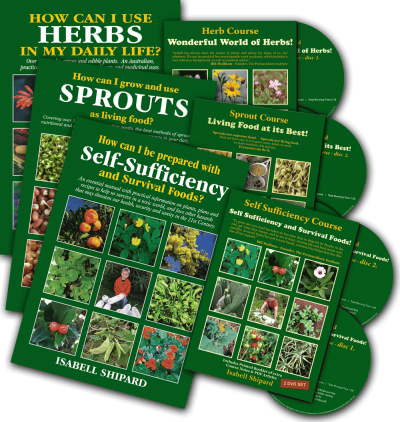When considering how best to list the large array of seeds we can sprout, I decided to introduce them as plant families, as in each family there are many similarities, just like in a human family. However, just like within the family, each person has individual characteristics and is unique, so, too, with seeds, each kind has distinctive features.

A. rice bean B. fenugreek C. chickpeas
D. lentils E. seven year bean F. mucuna.
There are hundreds of plant families, but when it comes to edible plant families, 90% of our food belongs in a dozen families, and there is an amazing amount of information on these, that can enrich our lives. As we are reliant on plants for all our food, whether fruit, bread or meat, we will benefit by learning all we can about their properties and constituents, as they are essential to our health and wellbeing.
In each seed chapter, after the common name in bold print, on the next line in bold italics is the genus (beginning with a capital letter) and then species, followed by variety (var.) if applicable. Some species may also have a synonym name indicated by the abbreviation syn. The family (F.) name then follows. The photo references are indicated by ‘(p …)’.
Description and Sprouting gives information of the seed, plant and methods of sprouting; and, also, Constituents, Vitamins, Minerals and Therapeutic Actions. Note: under Constituents, Vitamins, Minerals not all properties are listed, as some are inherent in all seeds (e.g. carbohydrates, fibre, oil), nor does this classification list all properties, which would be quite an extensive list, and probably many more still to be discovered in ongoing research.
The headings Medicinal Uses and Culinary Uses, gives research and uses.
… … omitted text, please see How can I grow and use Sprouts as living food? for full text.



